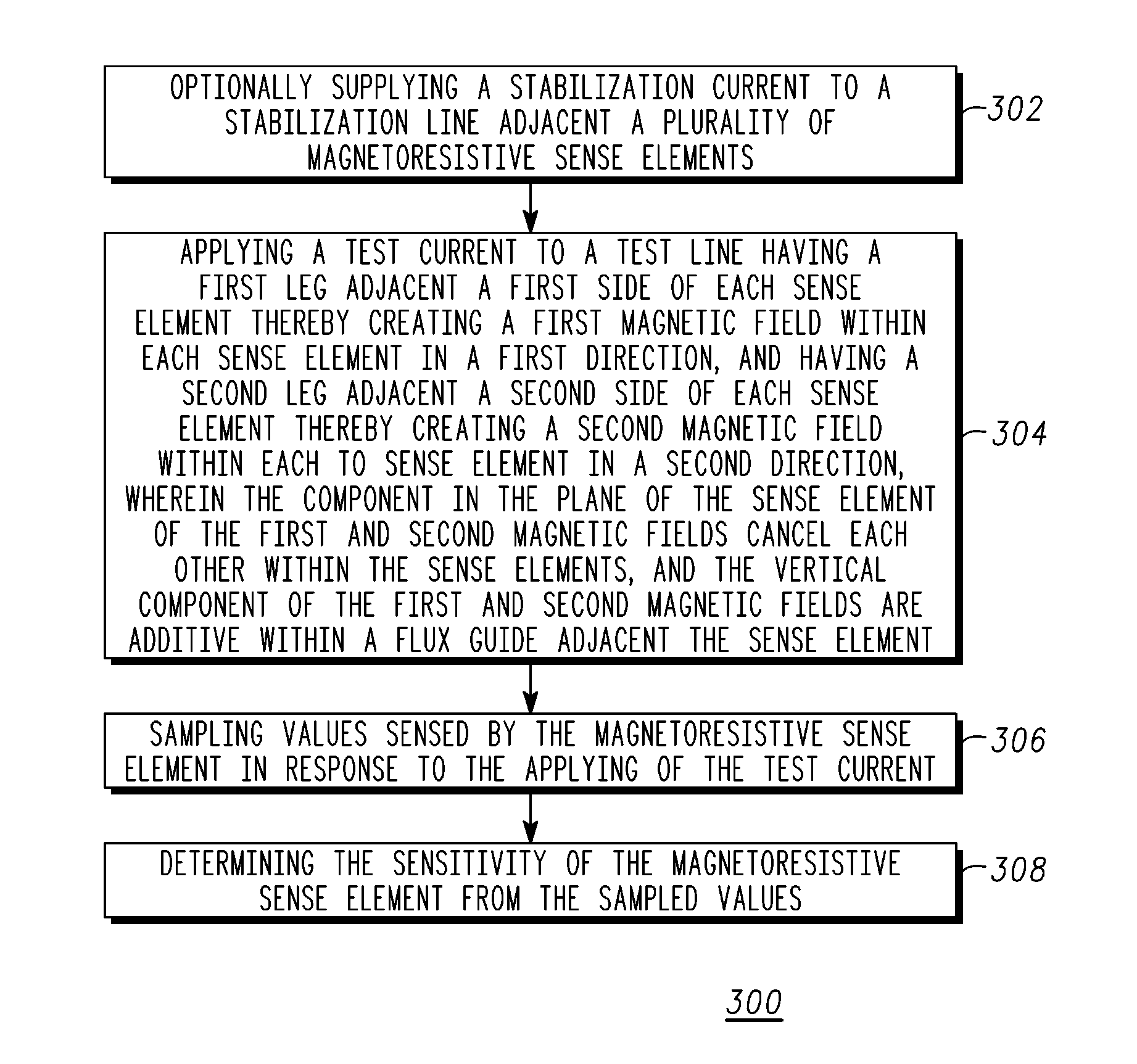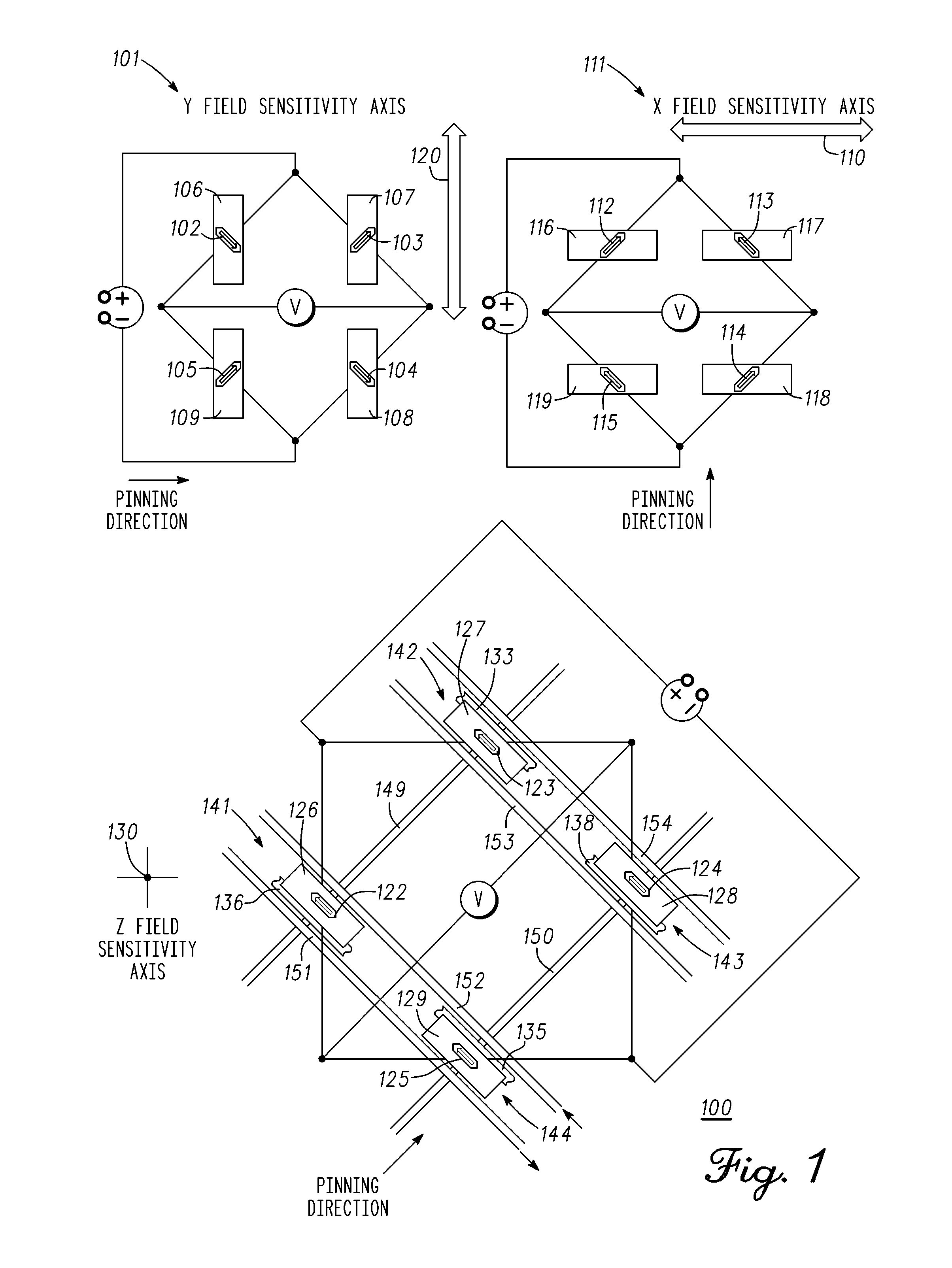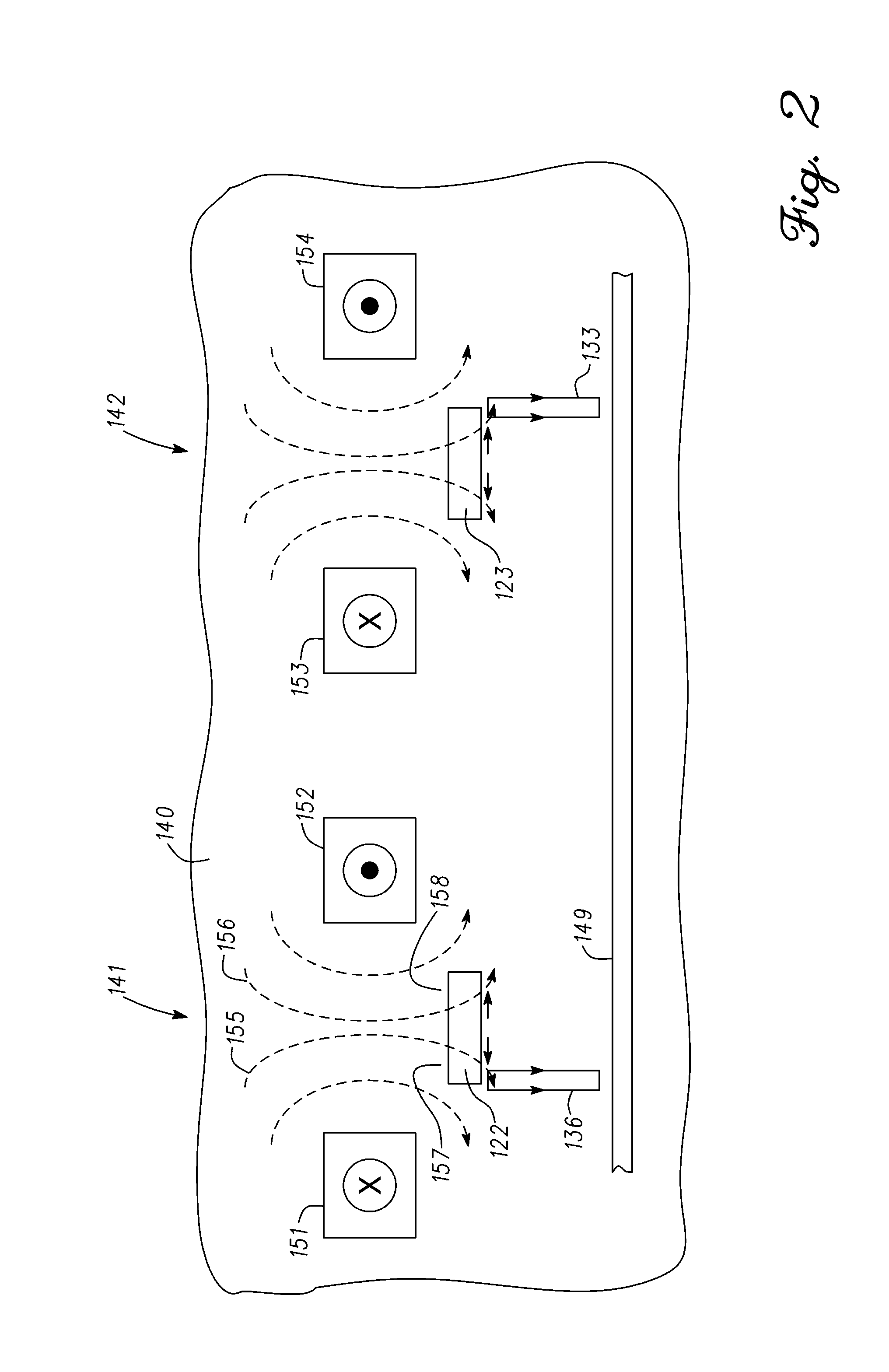Method and structure for testing and calibrating three axis magnetic field sensing devices
a three-axis magnetic field and sensing device technology, applied in the field of magnetic field sensing devices, can solve the problems of large set-reset pulses from bulky coils of approximately 500 ma, high cost of amr sensor configuration, and various limitations
- Summary
- Abstract
- Description
- Claims
- Application Information
AI Technical Summary
Benefits of technology
Problems solved by technology
Method used
Image
Examples
Embodiment Construction
[0015]The following detailed description is merely illustrative in nature and is not intended to limit the embodiments of the subject matter or the application and uses of such embodiments. Any implementation described herein as exemplary is not necessarily to be construed as preferred or advantageous over other implementations. Furthermore, there is no intention to be bound by any expressed or implied theory presented in the preceding technical field, background, brief summary, or the following detailed description.
[0016]Through the integration of high aspect ratio vertical bars (flux guides) of a high permeability material, for example, nickel iron (NiFe), whose ends terminate in close proximity to opposed edges and opposite sides of a magnetic sense element, a portion of the Z axis field can be brought into the XY plane. These flux guides serve to capture magnetic flux from an applied field oriented in the Z direction, and in so doing, bend the field lines in a substantially hori...
PUM
 Login to View More
Login to View More Abstract
Description
Claims
Application Information
 Login to View More
Login to View More - R&D
- Intellectual Property
- Life Sciences
- Materials
- Tech Scout
- Unparalleled Data Quality
- Higher Quality Content
- 60% Fewer Hallucinations
Browse by: Latest US Patents, China's latest patents, Technical Efficacy Thesaurus, Application Domain, Technology Topic, Popular Technical Reports.
© 2025 PatSnap. All rights reserved.Legal|Privacy policy|Modern Slavery Act Transparency Statement|Sitemap|About US| Contact US: help@patsnap.com



